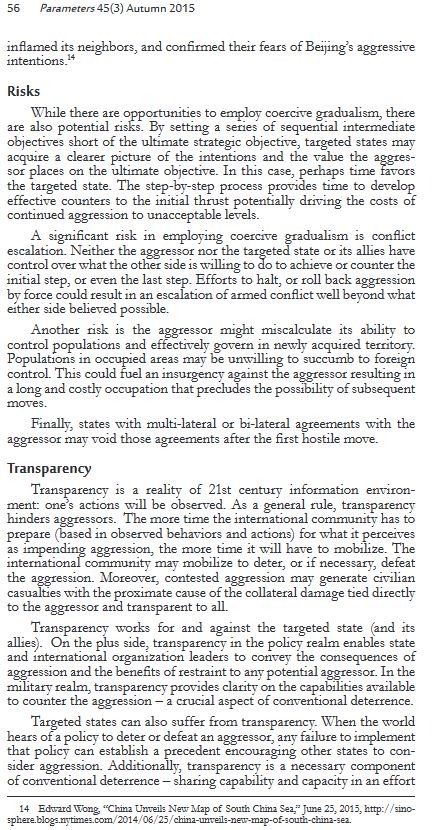Alston, P. (1984). Conjuring up new human rights: a proposal for quality control. Am. J. Int. Law 78, 607–621. doi: 10.2307/2202599
CrossRef Full Text | Google Scholar
Baker, L. R. (2000). Persons And Bodies: A Constitution View. Cambridge: Cambridge University Press.
Google Scholar
Berlin, I. (1969). Two Concepts of Liberty. Oxford: Oxford University Press.
Google Scholar
Boire, R. G. (2001). On cognitive liberty. J. Cogn. Liberties 2, 7–22.
Google Scholar
Brandeis, L., and Warren, S. (1890). The right to privacy. Harv. Law Rev. 4, 193–220.
Google Scholar
Brimacombe, P. (2000). All the Queen’s Men: The World of Elizabeth I. New York: St. Martin’s Press.
Google Scholar
Bublitz, C. (2015). “Cognitive Liberty or the International Human Right to Freedom of Thought,” in Handbook of Neuroethics, eds J. Clausen and N. Levy (Dordrecht: Springer), 1309–1333. doi: 10.1007/978-94-007-4707-4_166
CrossRef Full Text | Google Scholar
Bublitz, J.-C. (2013). “My mind is mine!? Cognitive liberty as a legal concept,” in Cognitive Enhancement, ed. H. Franke (Berlin: Springer), 233–264. doi: 10.1007/978-94-007-6253-4_19
CrossRef Full Text | Google Scholar
Bury, J. (1913). A History of Freedom of Thought, 1913. Alburgh: Facsimile Publisher.
Google Scholar
Collins, R. F., and Harrington, D. J. (1999). First Corinthians. Collegeville: Liturgical Press.
Google Scholar
Farah, M. J., Illes, J., Cook-Deegan, R., Gardner, H., Kandel, E., King, P., et al. (2004). Neurocognitive enhancement: what can we do and what should we do? Nat. Rev. Neurosci. 5, 421–425.
Google Scholar
Farahany, N. A. (2012). Incriminating thoughts. Stanford Law Rev. 64:351.
Google Scholar
Favaretto, M., De Clercq, E., Gaab, J., and Elger, B. S. (2020). First do no harm: an exploration of researchers’ ethics of conduct in Big Data behavioral studies. PLoS One 15:e0241865. doi: 10.1371/journal.pone.024186
CrossRef Full Text | Google Scholar
Fins, J. J. (2004). Neuromodulation, free will and determinism: lessons from the psychosurgery debate. Clin. Neurosci. Res. 4, 113–118. doi: 10.1016/j.cnr.2004.06.011
CrossRef Full Text | Google Scholar
Garcia, M. (2016). Racist in the machine: the disturbing implications of algorithmic bias. World Pol. J. 33, 111–117. doi: 10.1215/07402775-3813015
CrossRef Full Text | Google Scholar
Gaustad, E. S. (2001). Roger Williams: Prophet of Liberty. Oxford: Oxford University Press.
Google Scholar
Goering, S., Klein, E., Sullivan, L. S., Wexler, A., y Arcas, B. A., Bi, J., et al. (2021). Recommendations for Responsible Development and Application of Neurotechnologies. Neuroethics 2021, 1–22. doi: 10.1007/s12152-021-09468-6
PubMed Abstract | CrossRef Full Text | Google Scholar
Hallinan, D., Schütz, P., Friedewald, M., and De Hert, P. (2014). Neurodata and neuroprivacy: data protection outdated? Surveillance Soc. 12, 55–72. doi: 10.24908/ss.v12i1.4500
CrossRef Full Text | Google Scholar
Hayes, B. (2017). Migration and data protection: doing no harm in an age of mass displacement, mass surveillance and “big data”. Int. Rev. Red Cross 99, 179–209. doi: 10.1017/s1816383117000637
CrossRef Full Text | Google Scholar
Ienca, M. (2015). Neuroprivacy, neurosecurity and brain-hacking: emerging issues in neural engineering. Bioethica Forum 8, 51–53.
Google Scholar
Ienca, M., and Andorno, R. (2017b). Towards new human rights in the age of neuroscience and neurotechnology. Life Sci. Soc. Pol. 13:5.
Google Scholar
Ienca, M., and Ignatiadis, K. (2020). Artificial intelligence in clinical neuroscience: methodological and ethical challenges. AJOB Neurosci. 11, 77–87. doi: 10.1080/21507740.2020.1740352
PubMed Abstract | CrossRef Full Text | Google Scholar
Ienca, M., and Vayena, E. (2018). Cambridge Analytica and Online Manipulation. Scientific American. Basingstoke: Springer Nature.
Google Scholar
Illes, J., Kirschen, M. P., and Gabrieli, J. D. (2003). From neuroimaging to neuroethics. Nat. Neurosci. 6, 205–205.
Google Scholar
Illes, J., Rosen, A. C., Huang, L., Goldstein, R., Raffin, T. A., Swan, G., et al. (2004). Ethical consideration of incidental findings on adult brain MRI in research. Neurology 62, 888–890. doi: 10.1212/01.wnl.0000118531.90418.89
PubMed Abstract | CrossRef Full Text | Google Scholar
Inman, T. (1861). Foundation for A New Theory and Practice of Medicine. Churchill.
Google Scholar
Koh, H. H. (1998). How is international human rights law enforced. Indiana Law J. 74:1397.
Google Scholar
Long, A. A. (2002). Epictetus: A Stoic and Socratic guide to Life. Oxford: Clarendon Press.
Google Scholar
Luzzatti, L. (2006). God in Freedom: Studies in the Relations Between Church and State. New York: Cosimo, Inc.
Google Scholar
Machado, C. (2007). The concept of brain death did not evolve to benefit organ transplants. Brain Death 7, 1–20.
Google Scholar
Meslin, E. M. (1990). Protecting human subjects from harm through improved risk judgments. IRB Ethics Hum. Res. 12, 7–10. doi: 10.2307/3563683
CrossRef Full Text | Google Scholar
Mill, J. S. (1859). Essay on Liberty. London: John W Parker and Son.
Google Scholar
Milton, J. (1791). Comus: A Mask. Proprietors, Under the Direction of John Bell. Oxford: Oxford University.
Google Scholar
Nawrot, O. (2019). What about the interior castle? Response to Ienca’s and Andorno’s new human rights in the age of neuroscience and neurotechnology. Roczniki Teologiczne 66, 69–85. doi: 10.18290/rt.2019.66.3-5
CrossRef Full Text | Google Scholar
Nickel, J., Pogge, T., Smith, M., and Wenar, L. (2013). Stanford Encyclopedia of Philosophy, Human Rights. Stanford: Stanford University.
Google Scholar
OECD-Council. (2019). OECD Recommendation on Responsible Innovation in Neurotechnology. Paris: Organisation for Economic Co-operation and Development.
Google Scholar
Pereboom, D., and Caruso, G. (2002). “Hard-incompatibilist existentialism: Neuroscience, punishment, and meaning in life,” in Neuroexistentialism: Meaning, Morals, and Purpose in the Age of Neuroscience, eds G. D. Caruso and O. Flanagan (Oxford: Oxford University Press).
Google Scholar
Pizzetti, F. (2017). ‘A Proposal for a: “Universal Declaration on Neuroscience and Human Rights”. Bioethical 6, 3–6. doi: 10.4000/books.ifra.440
CrossRef Full Text | Google Scholar
Polenberg, R. (1996). Cardozo and the Criminal Law: Palko v. Connecticut Reconsidered. J. Supr. Court Hist. 21, 92–105. doi: 10.1111/j.1540-5818.1996.tb00051.x
CrossRef Full Text | Google Scholar
Reider, L. (1998). Toward a new test for the insanity defense: incorporating the discoveries of neuroscience into moral and legal theories. UCLA Law Rev. 46:289.
Google Scholar
Repetti, R. (2018). Buddhism, Meditation, and Free Will: A Theory of Mental Freedom. Oxforshire: Routledge.
Google Scholar
Safire, W. (2002). “Visions for a new field of neuroethics,” in Neuroethics: Mapping the Field, Conference Proceedings, May 13-14, 2002, (San Francisco: The Dana Press), 4–9.
Google Scholar
Schaffer, J. (2015). What not to multiply without necessity. Australas. J. Philos. 93, 644–664. doi: 10.1080/00048402.2014.992447
CrossRef Full Text | Google Scholar
Sententia, W. (2004). Neuroethical considerations: cognitive liberty and converging technologies for improving human cognition. Ann. N. Y. Acad. Sci. 1013, 221–228. doi: 10.1196/annals.1305.014
PubMed Abstract | CrossRef Full Text | Google Scholar
Shen, F. X. (2013). Neuroscience, mental privacy, and the law. Harv. J. Law Public Pol. 36, 653–173.
Google Scholar
Shen, F. X. (2016). The overlooked history of neurolaw. Fordham L. Rev. 85:667.
Google Scholar
Sommaggio, P., and Mazzocca, M. (2020). “Cognitive Liberty and Human Rights,” in Neuroscience and Law, eds A. D’Aloia and M. Errigo. (Cham: Springer), 95–111.
Google Scholar
Taylor, J. S., Harp, J. A., and Elliott, T. (1991). Neuropsychologists and neurolawyers. Neuropsychology 5:293. doi: 10.1037/0894-4105.5.4.293
CrossRef Full Text | Google Scholar
Turner, D. C., and Sahakian, B. J. (2006). Neuroethics of cognitive enhancement. BioSocieties 1, 113–123.
Google Scholar
United Nations Human Rights Committee (UNHRC) (1993). ”General Comment No. 22: The Right to Freedom of Thought, Conscience and Religion (Article 18), UN Doc. No”. CCPR/C/21/Rev. 1/Add. 4). Available Online at: www.refworld.org/docid/453883fb22.html [accessed July 31 2021].
Google Scholar
Universal Declaration of Human Rights (UDHR) (1948). United Nations General Assembly, Palais de Chaillot, Paris. Paris: UDHR.
Google Scholar
Van Inwagen, P. (1997). Materialism and the psychological-continuity account of personal identity. Philos. Perspect. 11, 305–319. doi: 10.1111/0029-4624.31.s11.14
CrossRef Full Text | Google Scholar
Welford, A. T. (1970). Mental Integrity and the Nature of Life. Med. J. Australia 1, 1135–1138. doi: 10.5694/j.1326-5377.1970.tb84477.x
CrossRef Full Text | Google Scholar
Westin, A. F. (1968). Privacy and freedom. Wash. Lee Law Rev. 25:166.
Google Scholar
Wolpe, P. R. (2017). “Neuroprivacy and Cognitive Liberty,” in The Routledge Handbook of Neuroethics, eds L. S. M. Johnson and K. S. Rommelfanger (New York: Routledge, Taylor & Francis Group), 214–224. doi: 10.4324/9781315708652-16
CrossRef Full Text | Google Scholar
Woolf, V. (1929). A Room of One’s Own and Three Guineas. Oxford: OUP Oxford.
Google Scholar
Yuste, R., Genser, J., and Herrmann, S. (2021). It’s Time for Neuro-Rights. Horizons J. Int. Relat. Sustain. Dev. 2021, 154–165.
Google Scholar
Yuste, R., Goering, S., Bi, G., Carmena, J. M., Carter, A., Fins, J. J., et al. (2017). Four ethical priorities for neurotechnologies and AI. Nat. News 551, 159–163. doi: 10.1038/551159a
PubMed Abstract | CrossRef Full Text | Google Scholar







